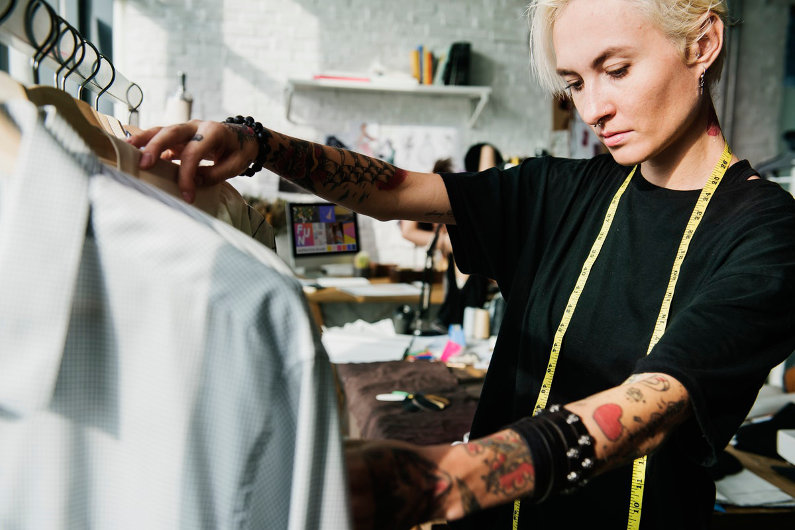With different audiences to cater towards, the marketing strategies between low-priced brands and premium brands tend to differ. But in what ways do consumers find a different reception between the two fashion labels? In this article, we explore further…

A review of 2018 for fashion
It’s important to initially look at how the fashion industry developed through 2018. With the introduction of e-commerce, shopping through social media, and a rise in technology-driven customers in recent years, the fashion industry has experienced a shift. So, what are some of the main issues of the sector today? The Business of Fashion released The State of Fashion 2018 report this year — the following are some notable changes that the industry has experienced:
- Personalisation — More customers are looking for products that no one else has through customisable, unique or limited-edition products.
- Lower brand loyalty — As the ability to compare brands becomes easier, customers are less loyal than they once were. One statistic reveals that among millennials, two-thirds are willing to switch brands for a discount of 30% or more.
- More demanding — Customers are becoming more demanding based on what they want from fashion retailers — convenience, quality, values orientation, newness, and price.
- Influenced by peers — With the use of social media still prominent, customers are becoming more influenced by what they see and read online. They readily share peer-to-peer information, reviews, and opinions. In fact, 55% of consumers purchase decisions are influenced by online reviews and 74% of customers’ purchase decisions are influenced by social media.
On top of meeting customer demands, what other goals do both lower-priced and premium brands want to reach?
- The problem with fast fashion — One topic that’s on the lips of members of the government and eco-conscious individuals is ‘fast-fashion’. This is where consumers purchase a low-cost fashion item, wear it once or twice and then throw it out. Often, these garments are not recycled, and this is a growing concern.
- Quicker supply chain — Retailers in the industry are running at an accelerated pace, as they try and reduce the time taken for a garment to go from design to customer. The digital consumer is becoming accustomed to next-day deliveries and instantaneous access to product ranges online — and brands must find a way to keep up.
- A focus on sustainability — Clothing retailers now realise their responsibility to be eco-friendly. With the growing problem of ‘fast-fashion’ becoming a widely discussed issue, it’s important for brands to make changes. We can expect sustainability to become an integral part of the supply chain and operations planning systems in the coming years too.
As a next stage, luxury brands are expected to develop more of a presence in the online world, something that has taken a backseat to face-to-face interactions in the premium sector. To extend their reach further, premium brands are collaborating with alternative platforms and broadening their target market online. In terms of low-priced fashion brands, the market is saturated with online-only businesses. These differentiate through celebrity endorsements, unique product categories, and through social media. In this sector, customers are less focused on the brand and more on the price — in fact, evidence shows that customers are less brand loyal than they once were, and low-cost fashion brands know this too well.

The differing approach
Similar goals aside, how do the brands differ in their approach?
By taking the time to understand their audience, luxury brands seek to build a long-lasting relationship with their customer base. Premium denim retailer velvet jeans, Trilogy Stores, say: “An important part of our business is truly understanding our customer through the one-on-one relationships they have with our stylists. This allows us to tailor new brands towards their needs and develop our premium ranges further in relation to what we know about them. For example, our ‘Only at Trilogy’ designs are designed in partnership with our best brands to create exclusive styles to us in the UK. This keeps our customers brand loyal”.
Currently, premium brands tend to have physical stores rather than digital. Therefore, they must understand the importance of customer service and experience. Often a tailored service is provided, with employees offering a personal shopping service for those who visit and taking the time to understand what the customer is looking for. Premium customers often enjoy a sensory experience too. An example of this is Rolls Royce who diffuses a blend of mahogany wood, leather, and oil for their cars. When potential buyers sit in the model, they’re overwhelmed with the nostalgic smells.
Lower-priced brands tend to focus more on short-term connections with their consumers. This is done through social media influencers and celebrity endorsements. These marketing techniques bring the brand onto the customer’s feed without them fully realising it. However, the same influencer could promote another brand’s clothing after six-month and this could lead to the customer’s loyalty to stray. One of the main things that these brands compete on is price, and they must be innovative in how they present this to the customer. For example, one online womenswear retailer offered a ‘minimum wage’ category where everything was £7.50 to appeal to their younger market.
The way the fashion industry works has undergone numerous changes in recent years, and the coming years will likely follow in kind. Premium and low-cost fashion brands must keep in mind that, although they operate in the same industry, the way that they connect with their customers is entirely different.
Sources
https://cdn.businessoffashion.com/reports/The_State_of_Fashion_2018_v2.pdf


